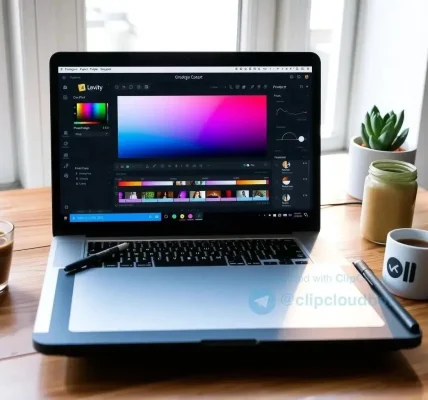The humble favicon, often overlooked, plays a surprisingly significant role in branding and user experience. This tiny icon, typically measuring just 16×16 pixels, acts as a visual shorthand for your website, appearing in browser tabs, bookmarks, and history lists. Understanding the importance of a well-designed favicon is crucial for any website owner looking to enhance their online presence. A thoughtfully crafted icon not only reinforces brand recognition but also helps users quickly identify and navigate to your site amidst a sea of open tabs. Therefore, let’s explore the world of favicons and how they can contribute to a more polished and professional online image.
What Exactly is a Favicon?
A favicon (short for “favorite icon”) is a small, custom icon associated with a particular website or webpage. It’s the little image you see in your browser tab next to the website’s title. Think of it as a visual identifier, a mini-logo that helps users easily spot your site. It’s a subtle detail, but one that contributes significantly to a website’s overall look and feel.
Where Do You See Favicons?
- Browser Tabs: The most common location.
- Bookmarks/Favorites: When you save a website, the favicon is saved along with it.
- History: They appear in your browser’s history.
- Search Engine Results Pages (SERPs): Some search engines display favicons next to website links.
- Desktop Shortcuts: When you create a shortcut to a website, the favicon is used as the icon.
Why Are Favicons Important?
While small, favicons contribute to a positive user experience and brand recognition. Here’s why they matter:
- Brand Recognition: A unique favicon helps users instantly recognize your website.
- User Experience: Makes it easier to find your site among multiple open tabs.
- Professionalism: A well-designed favicon adds a touch of polish and credibility.
- Memorability: A visually appealing icon can help users remember your website.
Creating Your Own Favicon
Creating a favicon doesn’t require advanced design skills. Here are a few options:
- Online Favicon Generators: Numerous free online tools allow you to upload an image and convert it into a favicon.
- Image Editing Software: Programs like Adobe Photoshop or GIMP can be used to create favicons from scratch.
- Hire a Designer: For a truly unique and professional favicon, consider hiring a graphic designer.
Implementing Your Favicon
<link rel="icon" type="image/x-icon" href="favicon.ico">
Make sure to replace “favicon.ico” with the actual path to your favicon file.
FAQ About Favicons
Q: What is the ideal size for a favicon?
A: While browsers support various sizes, 16×16 pixels is the most common and widely compatible size. However, providing multiple sizes (e.g., 32×32, 48×48) can ensure optimal display across different devices and platforms.
Q: What file formats are supported for favicons?
A: The .ico format is the traditional and most widely supported format. However, .png and .svg are also becoming increasingly popular, especially for modern browsers.
Q: How long does it take for a new favicon to appear?
A: It can take some time for browsers to cache and display the new favicon. Clearing your browser’s cache and cookies may help speed up the process;
Q: My favicon isn’t showing up. What could be the problem?
A: Double-check the file path in your HTML code, ensure the file format is supported, and try clearing your browser’s cache. Some servers may also require specific configurations to properly serve favicons.
Beyond the Basics: Favicon Alchemy
Now that we’ve covered the fundamentals, let’s delve into the more esoteric aspects of favicon creation. Forget simple squares; think beyond the pixelated prison! Consider the favicon as a tiny portal into the very soul of your website. What if your favicon subtly animated, a gentle pulse drawing the eye? Imagine a minimalist masterpiece, a single, vibrant glyph that speaks volumes about your brand’s ethos. The possibilities are as boundless as your imagination, constrained only by the limitations of those few, precious pixels.
The Art of Micro-Messaging
A favicon isn’t just a pretty picture; it’s a micro-message, a subtle signal to the user. Does it represent the core values of your company? Does it hint at the functionality of your website? Think of it as a secret handshake, a visual password that unlocks the user’s subconscious. A book icon for a library, a shopping cart for an e-commerce site – these are obvious, but can you elevate the familiar? Can you inject personality, humor, or a touch of the surreal?
The Favicon as a Living Entity
In a world of static websites, why not embrace the dynamic favicon? Some platforms and browsers allow for animated favicons, breathing life into this often-overlooked element. Imagine a progress bar slowly filling as a page loads, or a subtle change in color to indicate a new notification. This is where favicons transcend mere decoration and become active participants in the user experience.
Comparative Table: Favicon File Formats
| File Format | Pros | Cons | Use Cases |
|---|---|---|---|
| .ico | Widely supported, can contain multiple resolutions. | Can be larger file size, limited color palette. | Older browsers, maximum compatibility. |
| .png | Smaller file size, supports transparency. | May not be fully supported by older browsers. | Modern browsers, transparency required. |
| .svg | Scalable vector graphics, perfect for responsive design. | Limited support in older browsers, can be complex to create. | Modern browsers, responsive websites. |
Experiment! Don’t be afraid to push the boundaries of what a favicon can be. It is a powerful tool at your disposal, waiting to be unleashed. The internet is your canvas, and the favicon is your smallest, yet perhaps most impactful, brushstroke.

